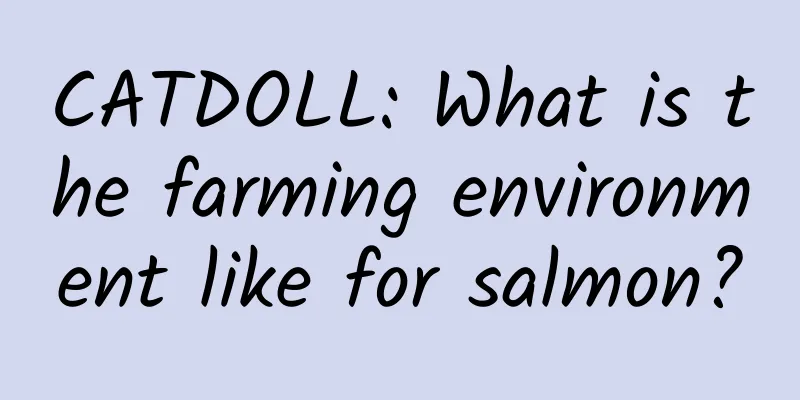CATDOLL : CATDOLL: I want information about shrimp farming (Penaeus vannamei), thank you

|
Category: Life Problem description: I want information about shrimp farming (whiteleg shrimp), thank you Analysis: Penaeus vanmamei. Boone, 1931, also known as white-leg shrimp, or Vannamei shrimp, is native to the coast of Ecuador and is one of the three shrimp species with the highest aquaculture output in the world. Artificial aquaculture in my country began in the late 1980s and early 1990s, and Taiwan started earlier than the mainland coast. Currently, both have achieved basic and stable aquaculture experience. Due to its strong aquaculture advantages, this shrimp species is expected to become a substitute for shrimp aquaculture in my country. Morphological characteristics 1. External morphological characteristics: The white shrimp is also divided into two parts: the cephalothorax and the abdomen. The surface of the shrimp body is a large transparent chitinous carapace forming an exoskeleton, which is usually light green and without spots. Compared with other shrimps, its frontal horn does not exceed the second section of the first antennal handle and is relatively short. The inner and outer whips of the first antennae are equal in length and very short. The large antennae are blue-gray, the heart is dark black, and the walking legs are often chalky. The cephalothorax is short, and the ratio to the abdomen is about 1:3. The body is long and laterally flattened, slightly fusiform, and the maximum body length of an adult can reach 23cm, which is very similar to the Chinese shrimp. 2. Internal structure characteristics: The internal structure of Penaeus vannamei is basically the same as that of Penaeus monodon and Penaeus chinensis. Most of the internal organs are concentrated in the cephalothorax, and the abdominal muscles are the most developed. They also have seven major systems: digestion, respiration, circulation, excretion, reproduction, nerves and muscles. However, the female shrimp does not have a spermatocyst, and is a shrimp species with an open spermatocyst. Classification and distribution The white shrimp belongs to the Arthropoda, the subphylum Branchial, the class Crustacea, the class Soft-shelled, the order Decapoda, the suborder Nautilus, the family Penaeidae, the genus Penaeus. It is a tropical shrimp with wide salt and wide temperature range. It is mainly distributed from northern Peru to Sanola, Mexico, with the largest number along the coast of Ecuador. Due to its long breeding period, fast growth, strong disease resistance, high meat replacement rate, low nutritional requirements, and strong transportation vitality, it has become the second largest aquaculture variety in the world after the giant tiger shrimp. In addition to Ecuador and other Central and South American regions where there is a large amount of artificial breeding, artificial breeding in Taiwan, Shandong, Guangdong, and Hainan in my country is also quite large. Relevant units are carrying out a trial of increasing the number of species and releasing them in the South my country Sea. Ecological habits Whiteleg shrimp often live on the muddy seabed. They crawl or lurk on the seabed surface during the day. They are active at night. They like quietness and are afraid of being startled. When they are intensively raised to more than 8 cm, they often jump frequently at night. Under natural conditions, the larvae float with the ocean currents. The shrimps often gather near the estuary. After growing to young shrimps, they gradually move to the shallow sea near the coast. After growing to 8-9 cm, they move to the deep sea, which can reach 72 cm deep. The water temperature is adapted to 25℃-30℃, the salinity is 28-34‰, and the pH value is 8.0±0.3. When artificially raised, the water temperature can be 16℃-35℃ (gradual range), the salinity is 0.5-40‰ (gradual range), and the pH value is between 7.3-8.6. Whiteleg shrimp has a wide and diverse diet and does not require high feed protein (especially animal protein in the later stage). In recent years, due to the success of freshwater aquaculture technology for Penaeus vannamei, the aquaculture scale of Penaeus vannamei has expanded rapidly, becoming the fastest growing species in shrimp aquaculture. High returns are inevitably accompanied by high risks. Many farmers are new to the aquaculture technology and do not know much about it. They have encountered many problems by applying old experience. In view of the problems encountered by farmers, we have summarized our production practices and put forward the following suggestions: 1. Make preparations before planting seedlings First of all, the pond should be cleaned and disinfected. The time should be arranged about 15 days before stocking. 150kg of quicklime should be released per mu. After 7 days, 30cm of water should be added. At the same time, 150kg of basal fertilizer should be applied to improve the water quality. At present, the salinity of the nursery is generally diluted to 3‰. It is best for shrimp fry to be intensively cultivated and fully adapted to the fresh water before being put into the large pond for breeding. Therefore, it is necessary to use leather nets to fence. Generally, each mu of fence is calculated according to the standard of 50m2. The salinity of the temporary holding pond should be consistent with that of the nursery, and 50kg of magnesium sulfate should be added per ton of salt. In order to improve the survival rate, corresponding oxygenation equipment can be equipped, and an air head is equipped for every lom2. 2. The amount of seedlings released at one time should be sufficient to ensure the yield At present, the survival rate of white shrimp farming can generally reach about 80%, and 10,000 seedlings can produce 100kg of commercial shrimp. According to the forecast of this year's market, the price of white shrimp should be around 20 yuan/kg. In order to effectively resolve market risks, the output must be increased. The critical point of profit and loss in this area is about 100kg per mu, so when the yield per mu reaches more than 200kg, the ideal income can be guaranteed. Therefore, when stocking seedlings, we require 40,000 white shrimp seedlings per mu, even if the survival rate is only 50%, the corresponding output can be guaranteed. 3. Gradually desalinate to ensure survival rate After stocking, add about 5 cm of fresh water every day. After a week, the shrimp fry will be fully adapted to freshwater farming. Thereafter, water can be added regularly as the temperature rises. When the temperature reaches high in summer, ensure that the farming water level reaches above 1.5 cm. 4. Master the appropriate feeding amount and feed antiviral drugs regularly In the early stage of Penaeus vannamei farming, the feeding requirements are small and fine. In addition to fertilizing the water quality to ensure that the shrimp fry have sufficient basic bait when they are put into the pond, they should also be fed with an appropriate amount of high-end bait (such as shrimp flakes, BP, etc.). After a week of shrimp fry adapting to the environment, they are mainly fed with broken feed. At this time, it is advisable to sprinkle the whole pond to ensure that the shrimp fry can get enough bait. When the size of the white shrimp reaches 3cm, granular bait should be fed. At this time, a feeding platform should be set up in the shallow water around the pond to observe the feeding situation of the white shrimp. Before the size reaches 7cm, feed twice a day (usually 8-9 am and 4-5 pm); after the size reaches 7cm, feed 3-5 times a day. In order to enhance the disease resistance of white shrimp, high-efficiency and residue-free drugs should be fed regularly, and allicin, immune polysaccharide, EZO, etc. should be added. 5. Equipped with oxygen enrichment facilities and turned on regularly in summer When the yield of white shrimp per mu reaches more than 200kg, corresponding oxygenation facilities should be equipped. Generally, one 1.5kW oxygenator should be equipped for every 3 mu. In the peak growth season in summer and autumn, the machine should be turned on at around 2 a.m. every day. When the weather is hot and humid, it can be turned on earlier. The startup time should be kept for more than 1 hour. When the weather is clear, it can be turned on in the afternoon to 12 hours to maintain a balanced distribution of dissolved oxygen in the water. 6. Do not change water frequently and use microbial preparations to adjust water quality During the peak growth season, due to the large amount of feeding, the water quality is seriously polluted. The conventional method is to change a lot of water, which requires sufficient permanent water, but the water pollution is serious and difficult to guarantee. In practice, we often use microbial agents to control water quality, and the effect is very ideal. Microbial agents are mainly photosynthetic bacteria, which can effectively decompose organic matter, reduce the concentration of ammonia nitrogen, nitrite and hydrogen sulfide in water, and maintain stable water quality. Generally, the dosage per mu (water depth 1.5m) is 3-5kg, and it is sprayed 2-3 times a month. 7. Fishing should be done in batches to increase production The stocking of whiteleg shrimp in this area is mostly at the end of May and the beginning of June. In August, some of them have reached commercial specifications, and the market price is relatively high at this time. We can use ground cages to catch them. In actual production, we put the cages at 4 o'clock in the morning and collect them an hour later. The quantity can be determined according to the sales volume. Generally, one ground cage can collect about 5kg. The collected whiteleg shrimp can be put into the cage equipped with aeration equipment, and the small-sized shrimp can be put into the pond for further breeding. Catching the big ones and leaving the small ones can increase the yield and achieve better economic benefits. |
<<: CATDOLL: Which type of marine fish pellet feed is better?
>>: CATDOLL: What are the breeding requirements for duckbill fish?
Recommend
CATDOLL: Learn about the treatment and precautions for chicken eye abscess
Treatment of chicken eye abscess Eye abscesses ar...
CATDOLL: Market prospects for earthworm farming (What is the market prospect for earthworm farming)
1. What is the market value and prospects of eart...
CATDOLL: The golden pomfret died with its mouth open. What disease is this?
1. The golden pomfret died with its mouth open. W...
CATDOLL: What color is the flesh of a silver carp after it dies?
What color is the flesh of a silver carp after it...
CATDOLL: How many kilograms does the largest crucian carp weigh?
1. How many kilograms does the largest crucian ca...
CATDOLL: What do locusts eat?
What do locusts eat? Yellow locusts mainly includ...
CATDOLL: Does grass carp have more bones? Which one has fewer bones, grass carp or crucian carp?
Does grass carp have many bones? Which one has fe...
CATDOLL: Photos of sandworms (photos of sandworms)
1. Is the sandworm a Bobbit worm? The sandworm is...
What should I pay attention to when boarding a cat?
Things to note when boarding a cat: 1. When board...
CATDOLL: What are the costs and profits of farming snails?
1. What is the profit of raising a thousand snail...
CATDOLL: What happens if bees lose their queen?
The situation is different for different types of...
Can dog deworming medicine be given to cats?
Do not give dog anthelmintics to cats. This is be...
CATDOLL: Cockroach Farm Construction Plan (How to write a cockroach farm construction plan)
1. What materials are needed for cockroach breedi...
CATDOLL: How many finished loaches can be produced from one acre of loach seedlings?
How many finished loaches can be produced from on...
CATDOLL: What are the risks of raising earthworms at home? Is it difficult to sell them?
What are the risks of raising earthworms at home?...









